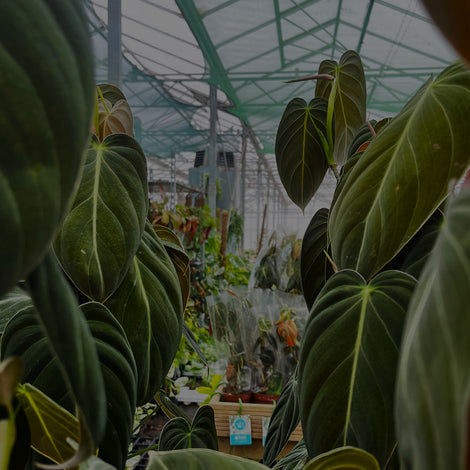Year-Round Care for Climbing Plants: Seasonal Maintenance Guide
Climbing plants can add a stunning vertical element to your garden, transforming walls, fences, and pergolas into lush, vibrant displays. To keep your climbers healthy and thriving throughout the year, it’s important to provide the right care in each season. Here’s a comprehensive guide to year-round maintenance for your climbing plants.
Spring: Awakening and Growth
1. Pruning and Tidying:
- Late Winter to Early Spring: Before new growth starts, prune back any dead, damaged, or weak stems to encourage healthy growth.
- Shape and Control: Trim climbers to shape them and control their size. For vigorous growers like wisteria and clematis, this is crucial to prevent them from becoming unruly.
2. Feeding:
- Fertilisation: Apply a balanced, slow-release fertiliser to provide essential nutrients for new growth. Organic compost or well-rotted manure can also be used to enrich the soil.
- Mulching: Add a layer of mulch around the base of your plants to retain moisture, suppress weeds, and improve soil structure.
3. Supporting and Training:
- Check Structures: Ensure that trellises, arbors, and other supports are secure and in good condition.
- Tie New Growth: As new shoots appear, tie them gently to the supports using garden twine or soft ties. This guides the plant and prevents damage from wind or weight.
4. Pest and Disease Control:
- Monitor Early: Keep an eye out for early signs of pests and diseases. Treat issues promptly with organic solutions like insecticidal soap or neem oil to prevent them from spreading.
Summer: Vigorous Growth and Flowering
1. Watering:
- Consistent Moisture: Water regularly, especially during dry spells. Ensure the soil remains evenly moist but not waterlogged.
- Mulch Maintenance: Maintain mulch layers to help retain soil moisture and keep roots cool.
2. Feeding:
- Supplemental Feeding: For heavy feeders like roses and clematis, consider additional feeding with a liquid fertiliser during the peak growing season to support flowering and growth.
3. Pruning and Deadheading:
- Deadheading: Remove spent flowers to encourage more blooms and prevent the plant from putting energy into seed production.
- Summer Pruning: For plants like wisteria, prune back long shoots to maintain shape and encourage secondary flowering.
4. Pest and Disease Control:
- Regular Inspections: Continue to monitor for pests and diseases. Remove any affected foliage and treat as necessary to keep your climbers healthy.
Autumn: Preparing for Dormancy
1. Pruning:
- Post-Bloom Pruning: After the final blooms, prune back as necessary to maintain shape and remove any dead or diseased wood.
- Thinning: Thin out dense growth to improve air circulation and reduce the risk of winter damage from wind and ice.
2. Feeding and Soil Care:
- Final Feeding: Apply a last round of fertiliser to help your plants store energy for the winter.
- Soil Amendment: Add compost or organic matter to improve soil fertility and structure for the next growing season.
3. Watering:
- Deep Watering: Give your plants a deep watering before the first frost to ensure they go into winter well-hydrated.
4. Mulching and Protection:
- Winter Mulch: Add a thick layer of mulch to insulate roots against cold temperatures and prevent soil erosion.
- Protecting Tender Plants: For less hardy climbers, consider using horticultural fleece or burlap to protect against frost and wind.
Winter: Rest and Preparation
1. Monitoring and Maintenance:
- Inspect Supports: Check that all supports and structures remain secure and undamaged by winter weather.
- Clean Up: Remove any fallen leaves or debris around the base of your plants to reduce the risk of pests and diseases.
2. Pruning:
- Dormant Pruning: For certain climbers like roses, winter is the ideal time for pruning. Cut back to maintain shape and remove any crossing or overcrowded branches.
3. Planning:
- Assess and Plan: Use this quieter period to assess the success of your current planting and make plans for any new climbers or structural changes you want to implement in the spring.
4. Protection:
- Insulation: For particularly harsh climates, consider additional insulation around the base of your climbers to protect them from extreme cold.
General Tips for Year-Round Care
1. Consistent Monitoring:
- Regularly inspect your plants for signs of stress, pests, and diseases. Early detection and intervention are key to maintaining plant health.
2. Appropriate Watering:
- Adjust your watering schedule according to the season and weather conditions. Avoid overwatering or allowing the soil to dry out completely.
3. Fertilisation:
- Use a balanced fertiliser regimen tailored to the specific needs of your climbing plants. Organic options like compost and manure are excellent for long-term soil health.
4. Pruning Knowledge:
- Understand the specific pruning requirements of your climbers. Different species have different needs, and proper pruning can significantly impact growth and flowering.
By following this seasonal maintenance guide, you can ensure that your climbing plants remain healthy, vigorous, and beautiful throughout the year. With a little attention and care in each season, your garden will be a lush, green paradise that reaches new heights. Happy gardening!





















Leave a comment
Please note, comments need to be approved before they are published.